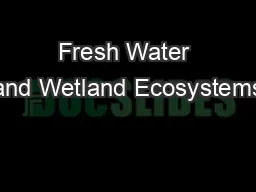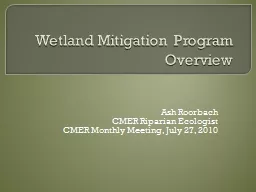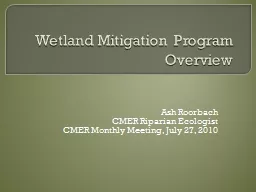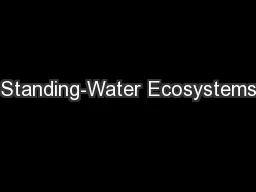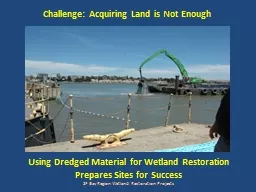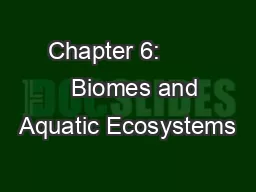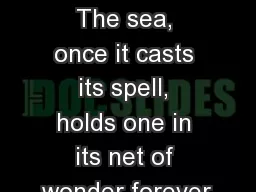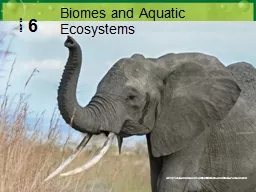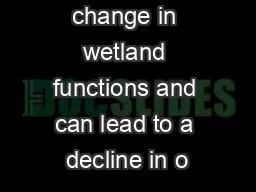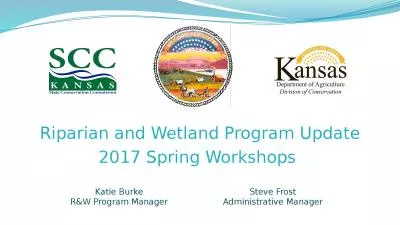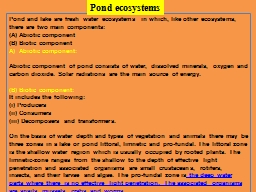PPT-Fresh Water and Wetland Ecosystems
Author : jane-oiler | Published Date : 2018-09-24
Description The Freshwater Biome accounts for one fifth of the area of the Earth and provides half of the drinking water and one third of the water used for irrigation
Presentation Embed Code
Download Presentation
Download Presentation The PPT/PDF document "Fresh Water and Wetland Ecosystems" is the property of its rightful owner. Permission is granted to download and print the materials on this website for personal, non-commercial use only, and to display it on your personal computer provided you do not modify the materials and that you retain all copyright notices contained in the materials. By downloading content from our website, you accept the terms of this agreement.
Fresh Water and Wetland Ecosystems: Transcript
Download Rules Of Document
"Fresh Water and Wetland Ecosystems"The content belongs to its owner. You may download and print it for personal use, without modification, and keep all copyright notices. By downloading, you agree to these terms.
Related Documents

